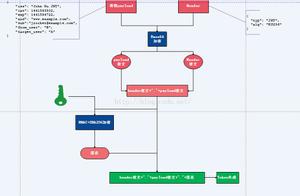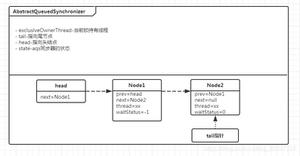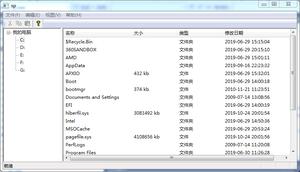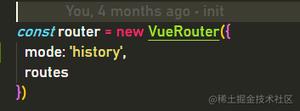手写React-Router源码,深入理解其原理
上一篇文章我们讲了React-Router的基本用法,并实现了常见的前端路由鉴权。本文会继续深入React-Router讲讲他的源码,套路还是一样的,我们先用官方的API实现一个简单的例子,然后自己手写这些API来替换官方的并且保持功能不变。
本文全部代码已经上传GitHub,大家可以拿下来玩玩:https://github.com/dennis-jiang/Front-End-Knowledges/tree/master/Examples/React/react-router-code
简单示例
本文用的例子是上篇文章开始那个不带鉴权的简单路由跳转例子,跑起来是这样子的:
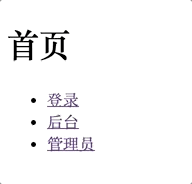
我们再来回顾下代码,在app.js里面我们用Route组件渲染了几个路由:
import React from 'react';import {
BrowserRouter as Router,
Switch,
Route,
} from "react-router-dom";
import Home from './pages/Home';
import Login from './pages/Login';
import Backend from './pages/Backend';
import Admin from './pages/Admin';
function App() {
return (
<Router>
<Switch>
<Route path="/login" component={Login}/>
<Route path="/backend" component={Backend}/>
<Route path="/admin" component={Admin}/>
<Route path="/" component={Home}/>
</Switch>
</Router>
);
}
export default App;
每个页面的代码都很简单,只有一个标题和回首页的链接,比如登录页长这样,其他几个页面类似:
import React from 'react';import { Link } from 'react-router-dom';
function Login() {
return (
<>
<h1>登录页</h1>
<Link to="/">回首页</Link>
</>
);
}
export default Login;
这样我们就完成了一个最简单的React-Router的应用示例,我们来分析下我们用到了他的哪些API,这些API就是我们今天要手写的目标,仔细一看,我们好像只用到了几个组件,这几个组件都是从react-router-dom导出来的:
BrowserRouter源码
我们代码里面最外层的就是BrowserRouter,我们先去看看他的源码干了啥,地址传送门:https://github.com/ReactTraining/react-router/blob/master/packages/react-router-dom/modules/BrowserRouter.js
看了他的源码,我们发现BrowserRouter代码很简单,只是一个壳:
import React from "react";import { Router } from "react-router";
import { createBrowserHistory as createHistory } from "history";
class BrowserRouter extends React.Component {
history = createHistory(this.props);
render() {
return <Router history={this.history} children={this.props.children} />;
}
}
在这个壳里面还引用了两个库react-router和history,BrowserRouter仅仅是调用history的createHistory得到一个history对象,然后用这个对象渲染了react-router的Router组件。看起来我们要搞懂react-router-dom的源码还必须得去看react-router和history的源码,现在我们手上有好几个需要搞懂的库了,为了看懂他们的源码,我们得先理清楚他们的结构关系。
React-Router的项目结构
React-Router的结构是一个典型的monorepo,monorepo这两年开始流行了,是一种比较新的多项目管理方式,与之相对的是传统的multi-repo。比如React-Router的项目结构是这样的:
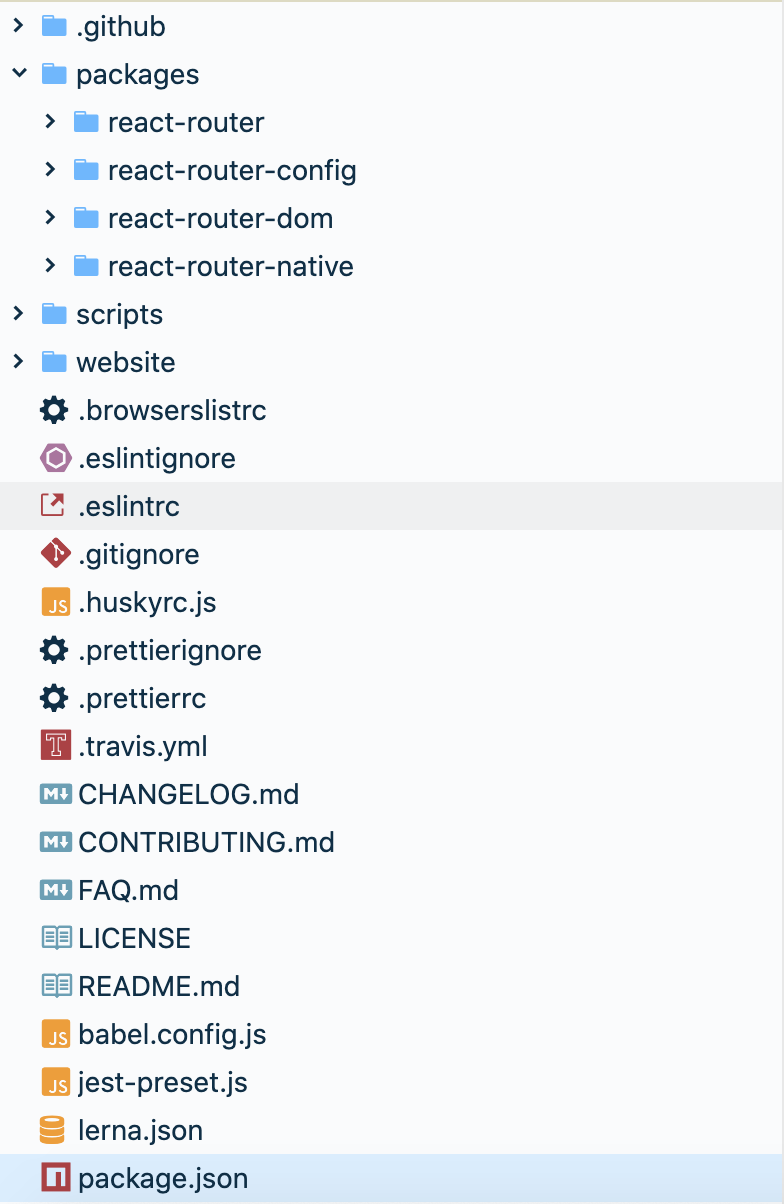
注意这里的packages文件夹下面有四个文件夹,这四个文件夹每个都可以作为一个单独的项目发布。之所以把他们放在一起,是因为他们之前有很强的依赖关系:
像这样多个仓库,发布多个包的情况,传统模式是给每个库都建一个git repo,这种方式被称为multi-repo。像React-Router这样将多个库放在同一个git repo里面的就是monorepo。这样做的好处是如果出了一个BUG或者加一个新功能,需要同时改react-router和react-router-dom,monorepo只需要一个commit一次性就改好了,发布也可以一起发布。如果是multi-repo则需要修改两个repo,然后分别发布两个repo,发布的时候还要协调两个repo之间的依赖关系。所以现在很多开源库都使用monorepo来将依赖很强的模块放在一个repo里面,比如React源码也是一个典型的monorepo。
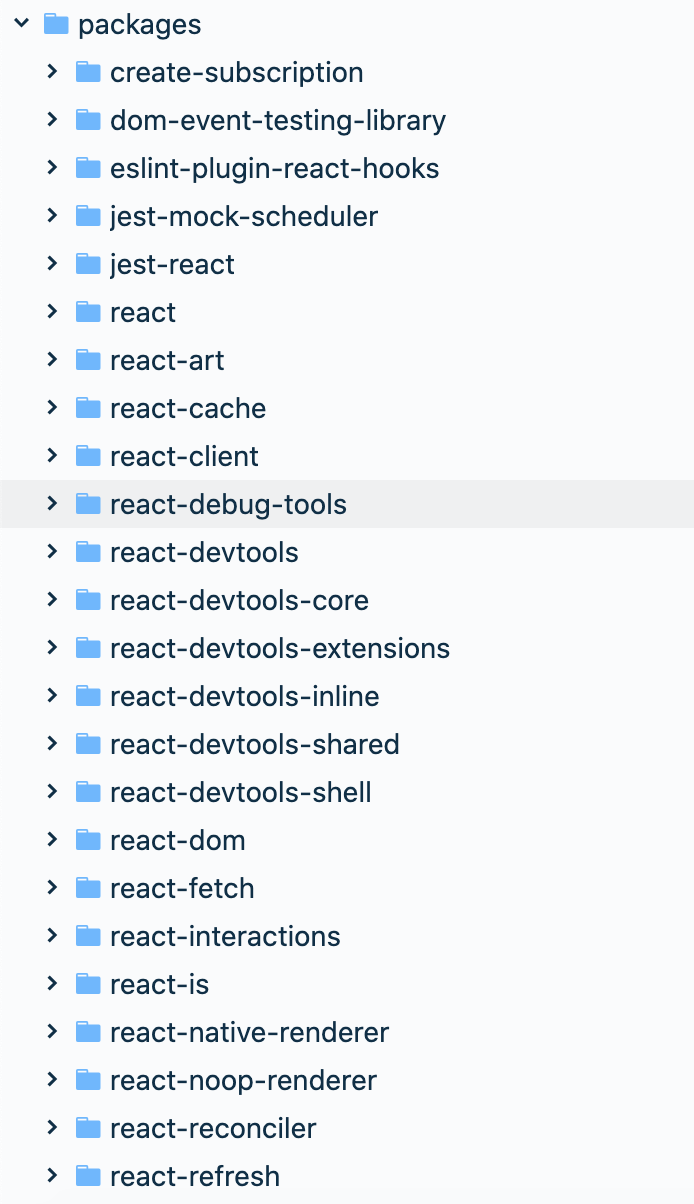
yarn有一个workspaces可以支持monorepo,使用这个功能需要在package.json里面配置workspaces,比如这样:
"workspaces": {"packages": [
"packages/*"
]
}
扯远了,monorepo可以后面单独开一篇文章来讲,这里讲这个主要是为了说明React-Router分拆成了多个包,这些包之间是有比较强的依赖的。
前面我们还用了一个库是history,这个库没在React-Router的monorepo里面,而是单独的一个库,因为官方把他写的功能很独立了,不一定非要结合React-Router使用,在其他地方也可以使用。
React-Router架构思路
我之前另一篇文章讲Vue-Router的原理提到过,前端路由实现无非这几个关键点:
其实React-Router的思路也是类似的,只是React-Router将这些功能拆分得更散,监听URL变化独立成了history库,vue-router里面的current变量在React里面是用Context API实现的,而且放到了核心库react-router里面,一些跟平台相关的组件则放到了对应的平台库react-router-dom或者react-router-native里面。按照这个思路,我们自己写的React-Router文件夹下面也建几个对应的文件夹:

手写自己的React-Router
然后我们顺着这个思路一步一步的将我们代码里面用到的API替换成自己的。
BrowserRouter组件
BrowserRouter这个代码前面看过,直接抄过来就行:
import React from "react";import { Router } from "react-router";
import { createBrowserHistory as createHistory } from "history";
class BrowserRouter extends React.Component {
history = createHistory(this.props);
render() {
return <Router history={this.history} children={this.props.children} />;
}
}
export default BrowserRouter;
react-router的Router组件
上面的BrowserRouter用到了react-router的Router组件,这个组件在浏览器和React-Native端都有使用,主要获取当前路由并通过Context API将它传递下去:
import React from "react";import HistoryContext from "./HistoryContext.js";
import RouterContext from "./RouterContext.js";
/**
* The public API for putting history on context.
*/
class Router extends React.Component {
// 静态方法,检测当前路由是否匹配
static computeRootMatch(pathname) {
return { path: "/", url: "/", params: {}, isExact: pathname === "/" };
}
constructor(props) {
super(props);
this.state = {
location: props.history.location // 将history的location挂载到state上
};
// 下面两个变量是防御性代码,防止根组件还没渲染location就变了
// 如果location变化时,当前根组件还没渲染出来,就先记下他,等当前组件mount了再设置到state上
this._isMounted = false;
this._pendingLocation = null;
// 通过history监听路由变化,变化的时候,改变state上的location
this.unlisten = props.history.listen(location => {
if (this._isMounted) {
this.setState({ location });
} else {
this._pendingLocation = location;
}
});
}
componentDidMount() {
this._isMounted = true;
if (this._pendingLocation) {
this.setState({ location: this._pendingLocation });
}
}
componentWillUnmount() {
if (this.unlisten) {
this.unlisten();
this._isMounted = false;
this._pendingLocation = null;
}
}
render() {
// render的内容很简单,就是两个context
// 一个是路由的相关属性,包括history和location等
// 一个只包含history信息,同时将子组件通过children渲染出来
return (
<RouterContext.Provider
value={{
history: this.props.history,
location: this.state.location,
match: Router.computeRootMatch(this.state.location.pathname),
}}
>
<HistoryContext.Provider
children={this.props.children || null}
value={this.props.history}
/>
</RouterContext.Provider>
);
}
}
export default Router;
上述代码是我精简过的代码,原版代码可以看这里。这段代码主要是创建了两个context,将路由信息和history信息放到了这两个context上,其他也没干啥了。关于React的Context API我在另外一篇文章详细讲过,这里不再赘述了。
history
前面我们其实用到了history的三个API:
下面我们来实现这个history:
// 创建和管理listeners的方法function createEvents() {
let handlers = [];
return {
push(fn) {
handlers.push(fn);
return function () {
handlers = handlers.filter(handler => handler !== fn);
};
},
call(arg) {
handlers.forEach(fn => fn && fn(arg));
}
}
}
function createBrowserHistory() {
const listeners = createEvents();
let location = {
pathname: '/',
};
// 路由变化时的回调
const handlePop = function () {
const currentLocation = {
pathname: window.location.pathname
}
listeners.call(currentLocation); // 路由变化时执行回调
}
// 监听popstate事件
// 注意pushState和replaceState并不会触发popstate
// 但是浏览器的前进后退会触发popstate
// 我们这里监听这个事件是为了处理浏览器的前进后退
window.addEventListener('popstate', handlePop);
// 返回的history上有个listen方法
const history = {
listen(listener) {
return listeners.push(listener);
},
location
}
return history;
}
export default createBrowserHistory;
上述history代码是超级精简版的代码,官方源码很多,还支持其他功能,我们这里只拎出来核心功能,对官方源码感兴趣的看这里:https://github.com/ReactTraining/history/blob/28c89f4091ae9e1b0001341ea60c629674e83627/packages/history/index.ts#L397
Route组件
我们前面的应用里面还有个很重要的组件是Route组件,这个组件是用来匹配路由和具体的组件的。这个组件看似是从react-router-dom里面导出来的,其实他只是相当于做了一个转发,原封不动的返回了react-router的Route组件:
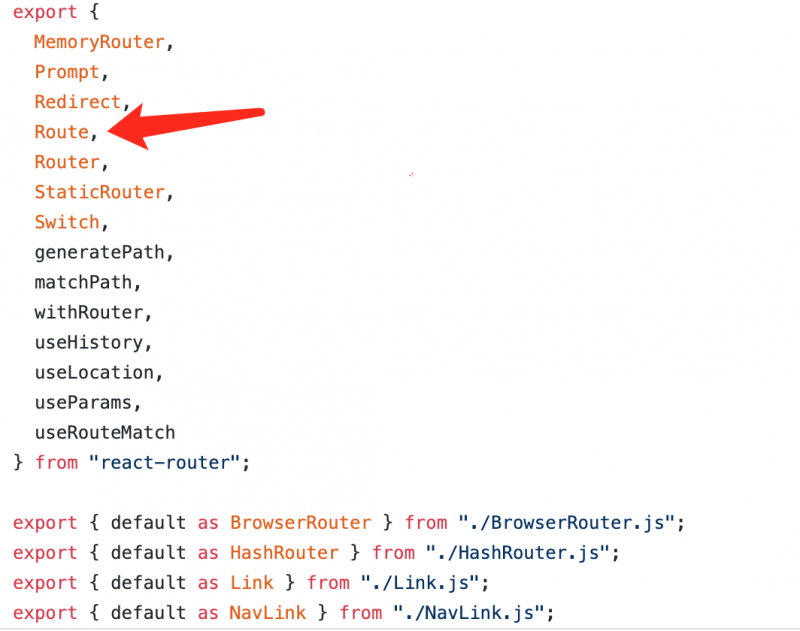
这个组件其实只有一个作用,就是将参数上的path拿来跟当前的location做对比,如果匹配上了就渲染参数上的component就行。为了匹配path和location,还需要一个辅助方法matchPath,我直接从源码抄这个方法了。大致思路是将我们传入的参数path转成一个正则,然后用这个正则去匹配当前的pathname:
import pathToRegexp from "path-to-regexp";const cache = {};
const cacheLimit = 10000;
let cacheCount = 0;
function compilePath(path, options) {
const cacheKey = `${options.end}${options.strict}${options.sensitive}`;
const pathCache = cache[cacheKey] || (cache[cacheKey] = {});
if (pathCache[path]) return pathCache[path];
const keys = [];
const regexp = pathToRegexp(path, keys, options);
const result = { regexp, keys };
if (cacheCount < cacheLimit) {
pathCache[path] = result;
cacheCount++;
}
return result;
}
/**
* Public API for matching a URL pathname to a path.
*/
function matchPath(pathname, options = {}) {
if (typeof options === "string" || Array.isArray(options)) {
options = { path: options };
}
const { path, exact = false, strict = false, sensitive = false } = options;
const paths = [].concat(path);
return paths.reduce((matched, path) => {
if (!path && path !== "") return null;
if (matched) return matched;
const { regexp, keys } = compilePath(path, {
end: exact,
strict,
sensitive
});
const match = regexp.exec(pathname);
if (!match) return null;
const [url, ...values] = match;
const isExact = pathname === url;
if (exact && !isExact) return null;
return {
path, // the path used to match
url: path === "/" && url === "" ? "/" : url, // the matched portion of the URL
isExact, // whether or not we matched exactly
params: keys.reduce((memo, key, index) => {
memo[key.name] = values[index];
return memo;
}, {})
};
}, null);
}
export default matchPath;
然后是Route组件,调用下matchPath来看下当前路由是否匹配就行了,当前路由记得从RouterContext里面拿:
import React from "react";import RouterContext from "./RouterContext.js";
import matchPath from "./matchPath.js";
/**
* The public API for matching a single path and rendering.
*/
class Route extends React.Component {
render() {
return (
<RouterContext.Consumer>
{context => {
// 从RouterContext获取location
const location = context.location;
const match = matchPath(location.pathname, this.props); // 调用matchPath检测当前路由是否匹配
const props = { ...context, location, match };
let { component } = this.props;
// render对应的component之前先用最新的参数match更新下RouterContext
// 这样下层嵌套的Route可以拿到对的值
return (
<RouterContext.Provider value={props}>
{props.match
? React.createElement(component, props)
: null}
</RouterContext.Provider>
);
}}
</RouterContext.Consumer>
);
}
}
export default Route;
上述代码也是精简过的,官方源码还支持函数组件和render方法等,具体代码可以看这里:https://github.com/ReactTraining/react-router/blob/master/packages/react-router/modules/Route.js
其实到这里,React-Router的核心功能已经实现了,但是我们开始的例子中还用到了Switch和Link组件,我们也一起来把它实现了吧。
Switch组件
我们上面的Route组件的功能是只要path匹配上当前路由就渲染组件,也就意味着如果多个Route的path都匹配上了当前路由,这几个组件都会渲染。所以Switch组件的功能只有一个,就是即使多个Route的path都匹配上了当前路由,也只渲染第一个匹配上的组件。要实现这个功能其实也不难,把Switch的children拿出来循环,找出第一个匹配的child,给它添加一个标记属性computedMatch,顺便把其他的child全部干掉,然后修改下Route的渲染逻辑,先检测computedMatch,如果没有这个再使用matchPath自己去匹配:
import React from "react";import RouterContext from "./RouterContext.js";
import matchPath from "./matchPath.js";
class Switch extends React.Component {
render() {
return (
<RouterContext.Consumer>
{context => {
const location = context.location; // 从RouterContext获取location
let element, match; // 两个变量记录第一次匹配上的子元素和match属性
// 使用React.Children.forEach来遍历子元素,而不能使用React.Children.toArray().find()
// 因为toArray会给每个子元素添加一个key,这会导致两个有同样component,但是不同URL的<Route>重复渲染
React.Children.forEach(this.props.children, child => {
// 先检测下match是否已经匹配到了
// 如果已经匹配过了,直接跳过
if (!match && React.isValidElement(child)) {
element = child;
const path = child.props.path;
match = matchPath(location.pathname, { ...child.props, path });
}
});
// 最终<Switch>组件的返回值只是匹配子元素的一个拷贝,其他子元素被忽略了
// match属性会被塞给拷贝元素的computedMatch
// 如果一个都没匹配上,返回null
return match
? React.cloneElement(element, { location, computedMatch: match })
: null;
}}
</RouterContext.Consumer>
);
}
}
export default Switch;
然后修改下Route组件,让他先检查computedMatch:
// ... 省略其他代码 ...const match = this.props.computedMatch
? this.props.computedMatch
: matchPath(location.pathname, this.props); // 调用matchPath检测当前路由是否匹配
Switch组件其实也是在react-router里面,源码跟我们上面写的差不多:https://github.com/ReactTraining/react-router/blob/master/packages/react-router/modules/Switch.js
Link组件
Link组件功能也很简单,就是一个跳转,浏览器上要实现一个跳转,可以用a标签,但是如果直接使用a标签可能会导致页面刷新,所以不能直接使用它,而应该使用history API,history API具体文档可以看这里。我们这里要跳转URL可以直接使用history.pushState。使用history.pushState需要注意一下几点:
我们先在history里面新加一个APIpush,这个API会调用history.pushState并手动执行回调:
// ... 省略其他代码 ...push(url) {
const history = window.history;
// 这里pushState并不会触发popstate
// 但是我们仍然要这样做,是为了保持state栈的一致性
history.pushState(null, '', url);
// 由于push并不触发popstate,我们需要手动调用回调函数
location = { pathname: url };
listeners.call(location);
}
上面说了我们直接使用a标签会导致页面刷新,但是如果不使用a标签,Link组件应该渲染个什么标签在页面上呢?可以随便渲染个span,div什么的都行,但是可能会跟大家平时的习惯不一样,还可能导致一些样式失效,所以官方还是选择了渲染一个a标签在这里,只是使用event.preventDefault禁止了默认行为,然后用history api自己实现了跳转,当然你可以自己传component参数进去改变默认的a标签。因为是a标签,不能兼容native,所以Link组件其实是在react-router-dom这个包里面:
import React from "react";import RouterContext from "../react-router/RouterContext";
// LinkAnchor只是渲染了一个没有默认行为的a标签
// 跳转行为由传进来的navigate实现
function LinkAnchor({navigate, ...rest}) {
let props = {
...rest,
onClick: event => {
event.preventDefault();
navigate();
}
}
return <a {...props} />;
}
function Link({
component = LinkAnchor, // component默认是LinkAnchor
to,
...rest
}) {
return (
<RouterContext.Consumer>
{context => {
const { history } = context; // 从RouterContext获取history对象
const props = {
...rest,
href: to,
navigate() {
history.push(to);
}
};
return React.createElement(component, props);
}}
</RouterContext.Consumer>
);
}
export default Link;
上述代码是精简版的Link,基本逻辑跟官方源码一样:https://github.com/ReactTraining/react-router/blob/master/packages/react-router-dom/modules/Link.js
到这里开头示例用到的全部API都换成了我们自己的,其实也实现了React-Router的核心功能。但是我们只实现了H5 history模式,hash模式并没有实现,其实有了这个架子,添加hash模式也比较简单了,基本架子不变,在react-router-dom里面添加一个HashRouter,他的基本结构跟BrowserRouter是一样的,只是他会调用history的createHashHistory,createHashHistory里面不仅仅会去监听popstate,某些浏览器在hash变化的时候不会触发popstate,所以还需要监听hashchange事件。对应的源码如下,大家可以自行阅读:
HashRouter: https://github.com/ReactTraining/react-router/blob/master/packages/react-router-dom/modules/HashRouter.js
createHashHistory: https://github.com/ReactTraining/history/blob/28c89f4091ae9e1b0001341ea60c629674e83627/packages/history/index.ts#L616
总结
React-Router的核心源码我们已经读完了,下面我们来总结下:
React-Router因为有跨平台的需求,所以分拆了好几个包,这几个包采用monorepo的方式管理:react-router是核心包,包含了大部分逻辑和组件,处理context和路由匹配都在这里。react-router-dom是浏览器使用的包,像Link这样需要渲染具体的a标签的组件就在这里。react-router-native是react-native使用的包,里面包含了android和ios具体的项目。
- 浏览器事件监听也单独独立成了一个包
history,跟history相关的处理都放在了这里,比如push,replace什么的。 React-Router实现时核心逻辑如下:- 使用不刷新的路由API,比如
history或者hash - 提供一个事件处理机制,让
React组件可以监听路由变化。 - 提供操作路由的接口,当路由变化时,通过事件回调通知
React。 - 当路由事件触发时,将变化的路由写入到
React的响应式数据上,也就是将这个值写到根router的state上,然后通过context传给子组件。 - 具体渲染时将路由配置的
path和当前浏览器地址做一个对比,匹配上就渲染对应的组件。
- 使用不刷新的路由API,比如
在使用
popstate时需要注意:- 原生
history.pushState和history.replaceState并不会触发popstate,要通知React需要我们手动调用回调函数。 - 浏览器的前进后退按钮会触发
popstate事件,所以我们还是要监听popstate,目的是兼容前进后退按钮。
- 原生
本文全部代码已经上传GitHub,大家可以拿下来玩玩:https://github.com/dennis-jiang/Front-End-Knowledges/tree/master/Examples/React/react-router-code
参考资料
官方文档:https://reactrouter.com/web/guides/quick-start
GitHub源码地址:https://github.com/ReactTraining/react-router/tree/master/packages
文章的最后,感谢你花费宝贵的时间阅读本文,如果本文给了你一点点帮助或者启发,请不要吝啬你的赞和GitHub小星星,你的支持是作者持续创作的动力。
作者博文GitHub项目地址: https://github.com/dennis-jiang/Front-End-Knowledges
以上是 手写React-Router源码,深入理解其原理 的全部内容, 来源链接: utcz.com/a/37964.html

